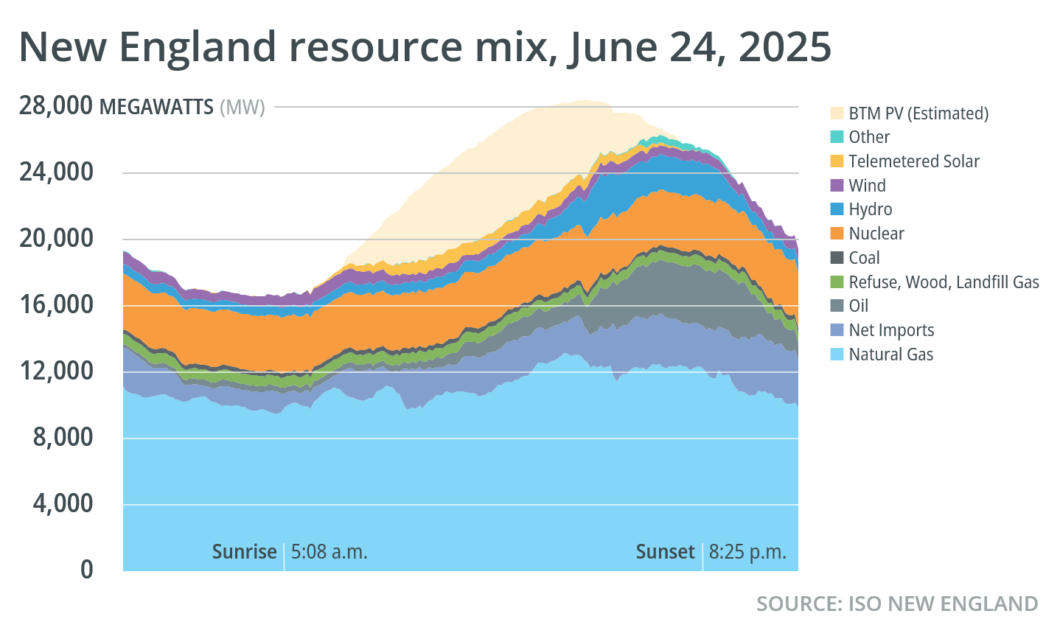Grid remains reliable as June heat wave brings highest peak in over a decade

ISO New England system operators used well-established procedures to balance supply and demand on the regional power system during a capacity deficiency on Tuesday, June 24, 2025.
Consumer demand for grid electricity unofficially peaked that evening at 26,024 megawatts (MW), the highest level seen in the region since 2013. That was roughly in line with the ISO’s pre-season forecast for above-average summer weather. It was still well below the region’s all-time peak of 28,130 MW, set in August 2006.
The peak hour was between 6 and 7 p.m., when the average temperature in New England was 95.6° Fahrenheit (F) and the dew point, a measure of humidity, was 68.0°F. The heat and humidity drove air conditioner use, creating increased demand for electricity.
Meanwhile, approximately 2,550 MW of generating capability was unavailable, causing the region to fall short of operating reserve requirements. Specific generators are not identified per the ISO’s Information Policy.
As a result, beginning at 5:22 p.m., system operators took measures—including activating reserve resources and reducing electricity exports to other regions—in order to maintain the reliable flow of electricity in New England. Among other actions, the ISO implemented a Power Caution and declared an Energy Emergency Alert Level 1 (EEA 1), the lowest of three alert levels.
Later in the evening, as consumer demand decreased and some generators returned to service, conditions on the system improved. ISO New England canceled the Power Caution and EEA 1 declarations at 9 p.m. The ISO did not issue appeals for public conservation during this event. Consumer conservation wasn’t necessary given the short duration of the event and the ability of reserve resources to make up the deficiency.
Anticipating tight operating conditions, system operators issued a precautionary alert at 9 p.m. Monday, June 23. This alert notifies power system operations, maintenance, construction, and test personnel, as well as other market participants, that they should suspend any testing or maintenance on their resources that could affect grid reliability. The ISO canceled the alert 48 hours later.

Carbon-emitting resources provided about 74% of total energy consumed in the region during the peak. Natural gas, the region’s predominant energy fuel throughout the year, averaged production of nearly 12,000 MW throughout the day. Nuclear resources averaged 3,350 MW. Oil and hydro resources produced throughout the day, but ramped up their output around the peak.
The ISO estimates that without contributions from behind-the-meter photovoltaics (BTM PV), demand would have peaked around 3:40 p.m. at 28,461 MW—three hours earlier and more than 2,000 MW higher than the actual peak. At that time, non-carbon-emitting resources provided a maximum of about 40% of the energy consumed in the region. Non-carbon-emitting resources include BTM PV as well as nuclear, hydro, wind, telemetered solar, battery storage, and demand response.
- Categories
- Inside ISO New England
- Tags
- summer, system operations, weather
